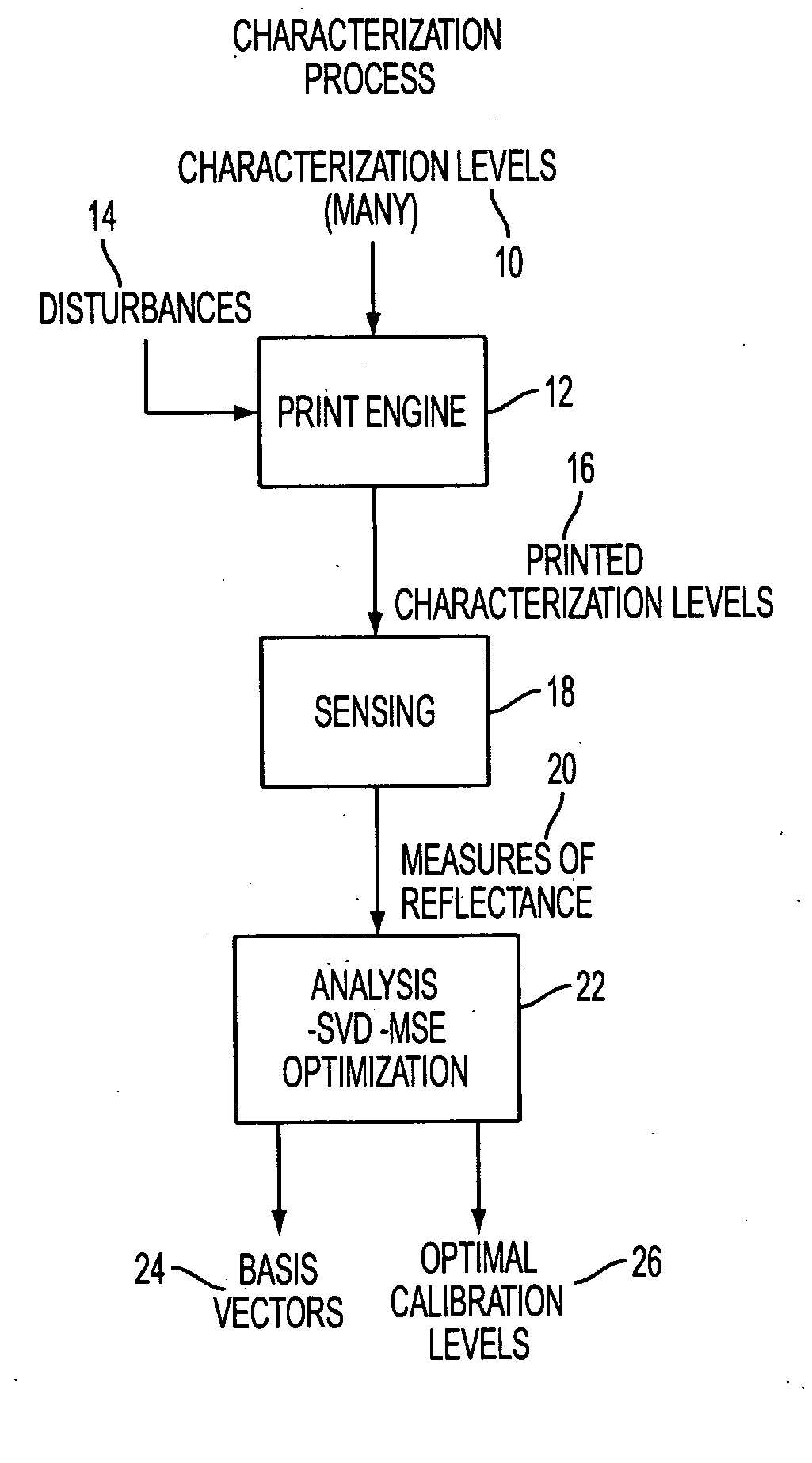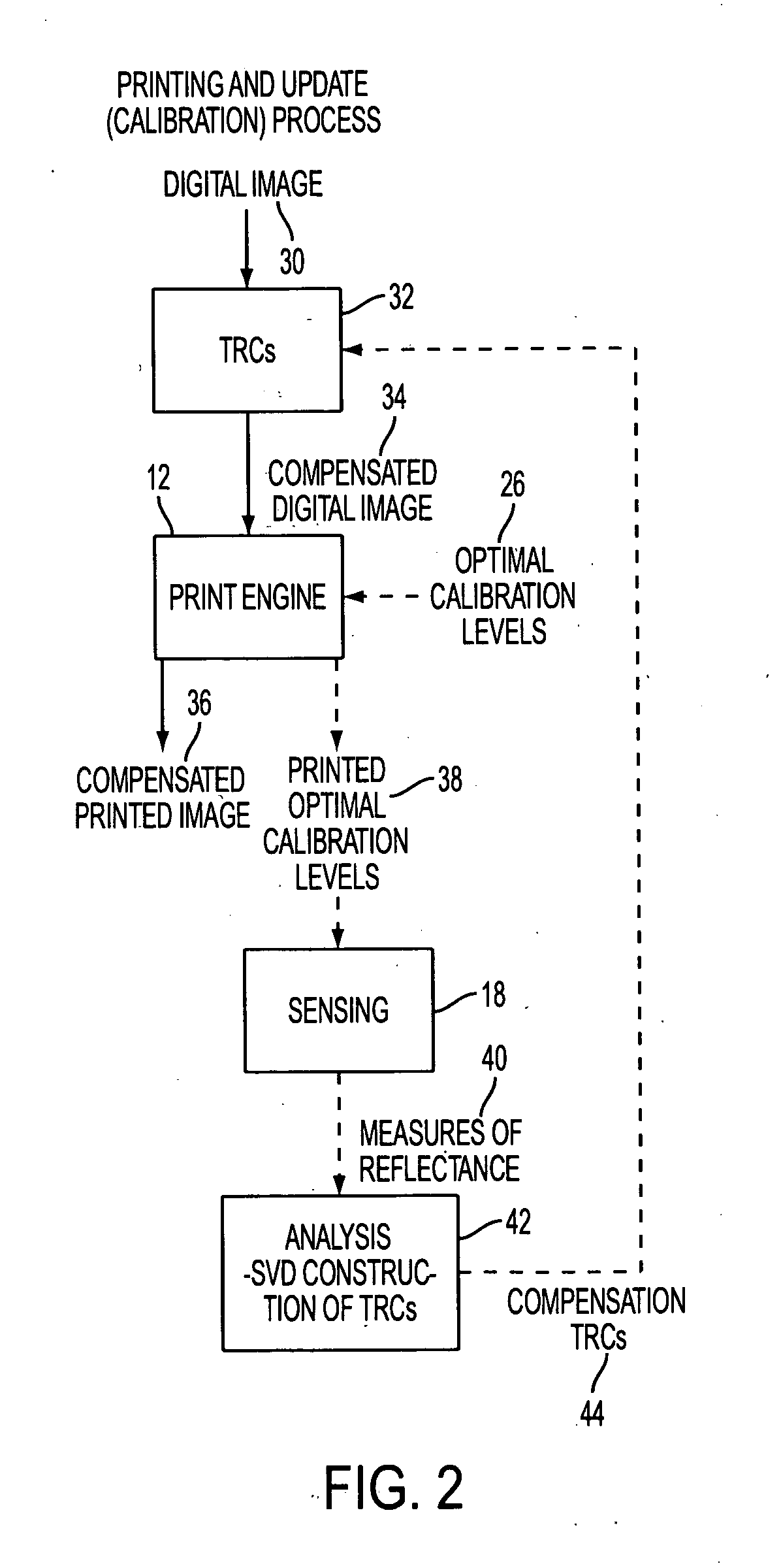Optimal test patch level selection for systems that are modeled using low rank eigen functions, with applications to feedback controls
- Summary
- Abstract
- Description
- Claims
- Application Information
AI Technical Summary
Benefits of technology
Problems solved by technology
Method used
Image
Examples
Embodiment Construction
[0018] Various aspects of print engine response can be modeled by making use of basis vector representations of the respective aspects of the print engine. Using basis vector methodology significantly aides in efficiently representing and controlling print engine response while rejecting uncorrelated noise. For example, in U.S. Pat. No. 5,749,020 issued to Mestha et al., the disclosure of which is incorporated herein by reference in its entirety, a measured TRC is decomposed into orthogonal basis functions. In other words, a linear combination of basis functions is used to model the imaging system with respect to actuators for producing a predicted TRC.
[0019] One consideration within the above-mentioned application, and for calibration in general, is the selection of gray levels and colors for measuring. Conventional interpolation-based calibration methods do not utilize optimal sample levels. Defining a minimal set of samples becomes increasingly important when one considers the m...
PUM
 Login to View More
Login to View More Abstract
Description
Claims
Application Information
 Login to View More
Login to View More - R&D
- Intellectual Property
- Life Sciences
- Materials
- Tech Scout
- Unparalleled Data Quality
- Higher Quality Content
- 60% Fewer Hallucinations
Browse by: Latest US Patents, China's latest patents, Technical Efficacy Thesaurus, Application Domain, Technology Topic, Popular Technical Reports.
© 2025 PatSnap. All rights reserved.Legal|Privacy policy|Modern Slavery Act Transparency Statement|Sitemap|About US| Contact US: help@patsnap.com



